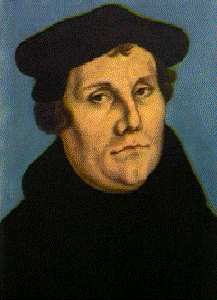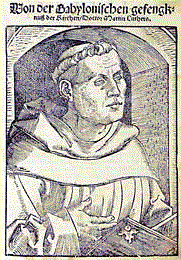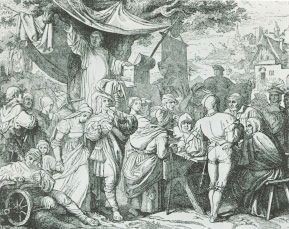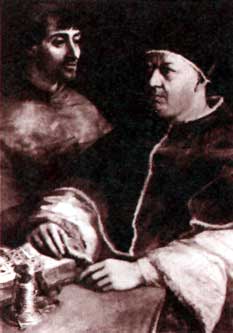
Martin Luther

Early Print - Frontispiece to Luther's "Prelude on the Babylonian Captivity"

Charles V
I. The basic story
II. Martin Luther (1483-1546)
a. Biography
b. Influences
i. A personal struggle (1505) – causes and catalysts
ii. Pauline/Augustinian
iii. Lectureship at Wittenberg: The “Tower Experience”
III. 1517 and the controversy over indulgences
a. Indulgences: theory and practice
b. The 1517 campaign
i. Plenary Jubilee
ii. Julius II (1503-13) and Leo X (1513-21)
c. The Ninety-five Theses
d. Luther’s issue
e. The bombshell: printing
f. The Church’s response
IV. The Road to Reformation: an attack on life and doctrine
a. The Leipzig Disputation (1519)
i. Andreas von Karlstadt (1480-1541) and Johann Eck (1486-1543)
ii. Luther as Hussite
iii. Two results
b. Laying out his theology (1520-1521)
i. 3 important pamphlets
1. “Address to the Christian Nobility of the German Nation”
2. "A Prelude on the Babylonian Captivity of the Church”
3. “The Freedom of a Christian”
ii. The message: Doctrine of Justification by
Grace
1. 4 major, interconnected aspects
a. Sola Gratia
b. Solo Christo
c. Sola Fide
d. Sola Scriptura
c. “Here I stand”: The Diet of Worms (1521)
i. Charles V, Holy Roman Emperor
ii. excommunication
V. Luther’s theological impact: 3 points

Johan Tetzel selling Indulgences

Leo X

Johanes Eck